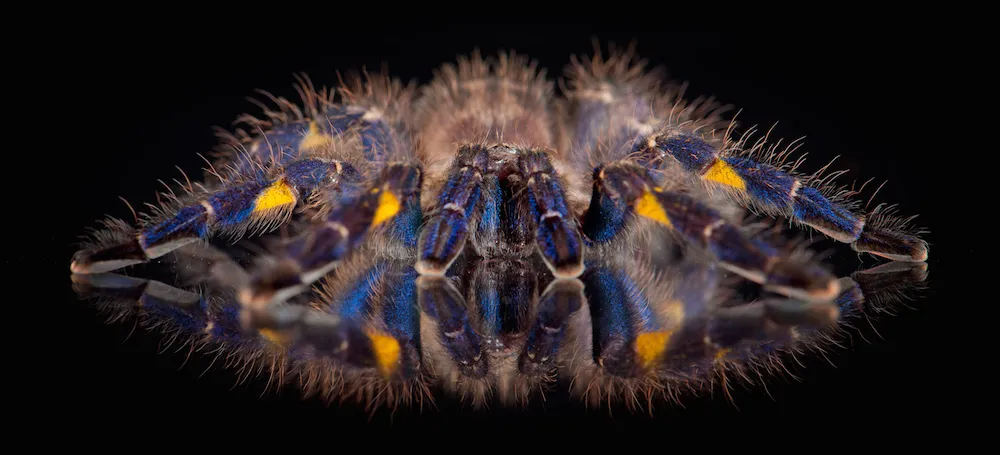Blue tarantulas captivate with their striking hues, making them highly sought-after pets. However, the term ‘blue tarantula’ doesn’t refer to a single species but rather a group of tarantulas that exhibit shades of blue. These arachnids come from diverse habitats and possess unique characteristics. Identifying these fascinating creatures requires understanding their specific breeds and the nuances of their appearance and behavior. This guide aims to provide comprehensive information on the most popular blue tarantula breeds, helping you to identify and appreciate these beautiful creatures. Whether you are a seasoned enthusiast or a curious beginner, learning about these tarantulas is a journey into the captivating world of exotic pets.
What Are Blue Tarantula Breeds
Blue tarantula breeds encompass a range of tarantula species characterized by the presence of blue coloration, which can vary from a subtle tinge to a vibrant display. This coloration often results from the presence of specialized structures within their exoskeletons that scatter light, creating the blue appearance. These tarantulas are not necessarily ‘blue’ all over; the color can be concentrated on the legs, carapace, abdomen, or a combination of these areas. Understanding the different breeds means recognizing that ‘blue’ is a descriptive term, not a taxonomic one. It is essential to know the scientific names, habitats, and specific features of each breed to accurately identify and care for these unique arachnids. The allure of blue tarantulas stems from their exotic appearance and the challenge of caring for these delicate and interesting creatures.
Identifying Blue Tarantula Breeds
Identifying blue tarantula breeds accurately involves several key aspects. First, you should familiarize yourself with the common breeds, their scientific names, and their typical appearances. Key features to observe include the distribution and intensity of the blue coloration, the overall size and body shape, and any unique markings or patterns. In addition, the tarantula’s behavior can provide valuable clues; some breeds have distinct temperaments or defensive postures. Finally, understanding the tarantula’s origin and habitat can aid in identification, as different breeds are native to specific geographical regions. When identifying a tarantula, it is crucial to observe it carefully, note its characteristics, and compare them with known breed profiles to arrive at an accurate identification. It can be an exciting challenge for any enthusiast.
The Gooty Sapphire Ornamental (Poecilotheria metallica)
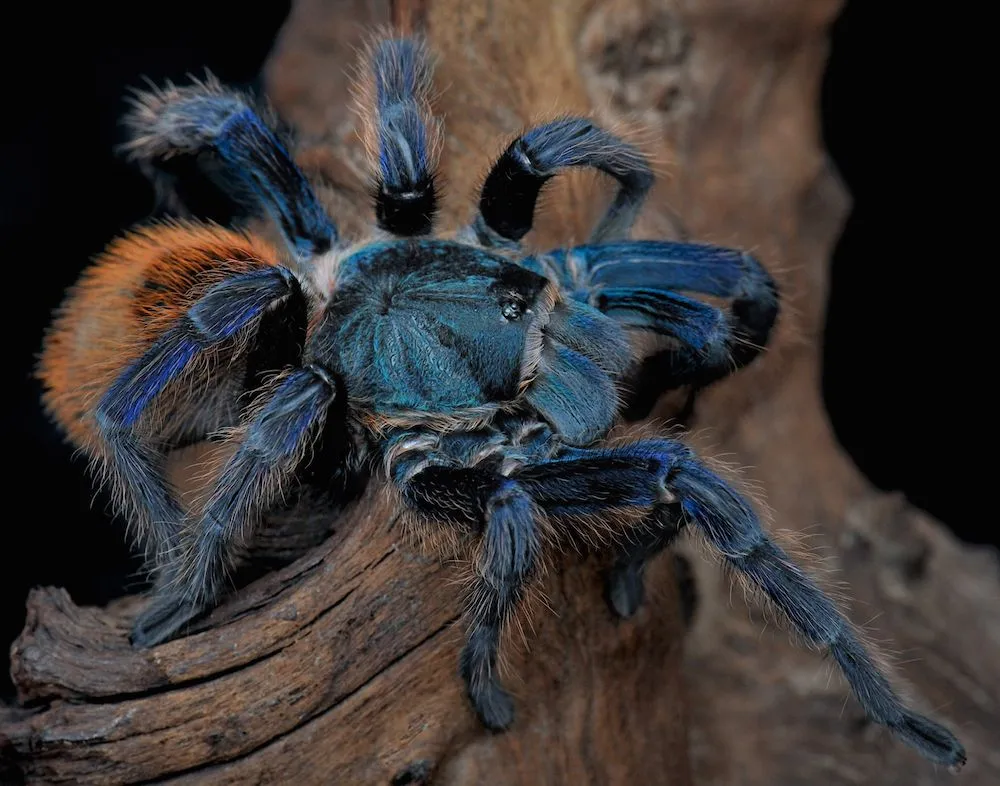
The Gooty Sapphire Ornamental (Poecilotheria metallica) is one of the most visually stunning blue tarantula breeds. Native to India, this arboreal species is known for its striking coloration and impressive size. This tarantula is not for the faint of heart, as it possesses a potent venom and a tendency towards defensive behavior. The Gooty Sapphire’s unique beauty, combined with its challenging nature, makes it a prized possession for experienced keepers. The careful and knowledgeable handling of this tarantula is necessary to provide the best possible care and minimize any risks. These tarantulas are a true jewel in the world of tarantulas.
Appearance of Gooty Sapphire Tarantulas
The Gooty Sapphire Tarantula lives up to its name with its dazzling appearance. The base color is a dark grey or black, contrasted by vibrant blue hues that appear on the legs and the carapace. The legs are adorned with vivid blue stripes and speckles, providing a striking contrast against the dark body. The abdomen may also feature hints of blue, adding to the overall aesthetic. This species can grow to a considerable size, with a leg span of up to 8 inches, further enhancing its visual impact. The combination of size and color makes this one of the most beautiful tarantulas. A healthy Gooty Sapphire has a glossy appearance, which further accentuates its unique color patterns. Their beauty comes with a high level of responsibility.
Habitat and Care for Gooty Sapphire Tarantulas
Caring for a Gooty Sapphire Ornamental requires careful attention to its specific needs. Since it is an arboreal species, the enclosure should be tall rather than wide, providing ample vertical space for climbing. The enclosure should have a substrate that retains moisture, such as a mix of coconut fiber and peat moss. A water dish and several hiding places are essential. Maintaining proper temperature and humidity levels is also crucial for the tarantula’s well-being; the ideal temperature range is between 75-85°F (24-29°C), and the humidity should be kept at around 60-70%. Feeding typically consists of insects, such as crickets or roaches, offered a few times a week. Handling should be minimized due to the tarantula’s potent venom and defensive nature. Regular monitoring of the environment and the tarantula’s behavior are essential for ensuring its health and happiness.
The Cobalt Blue Tarantula (Cyaneopubescens)
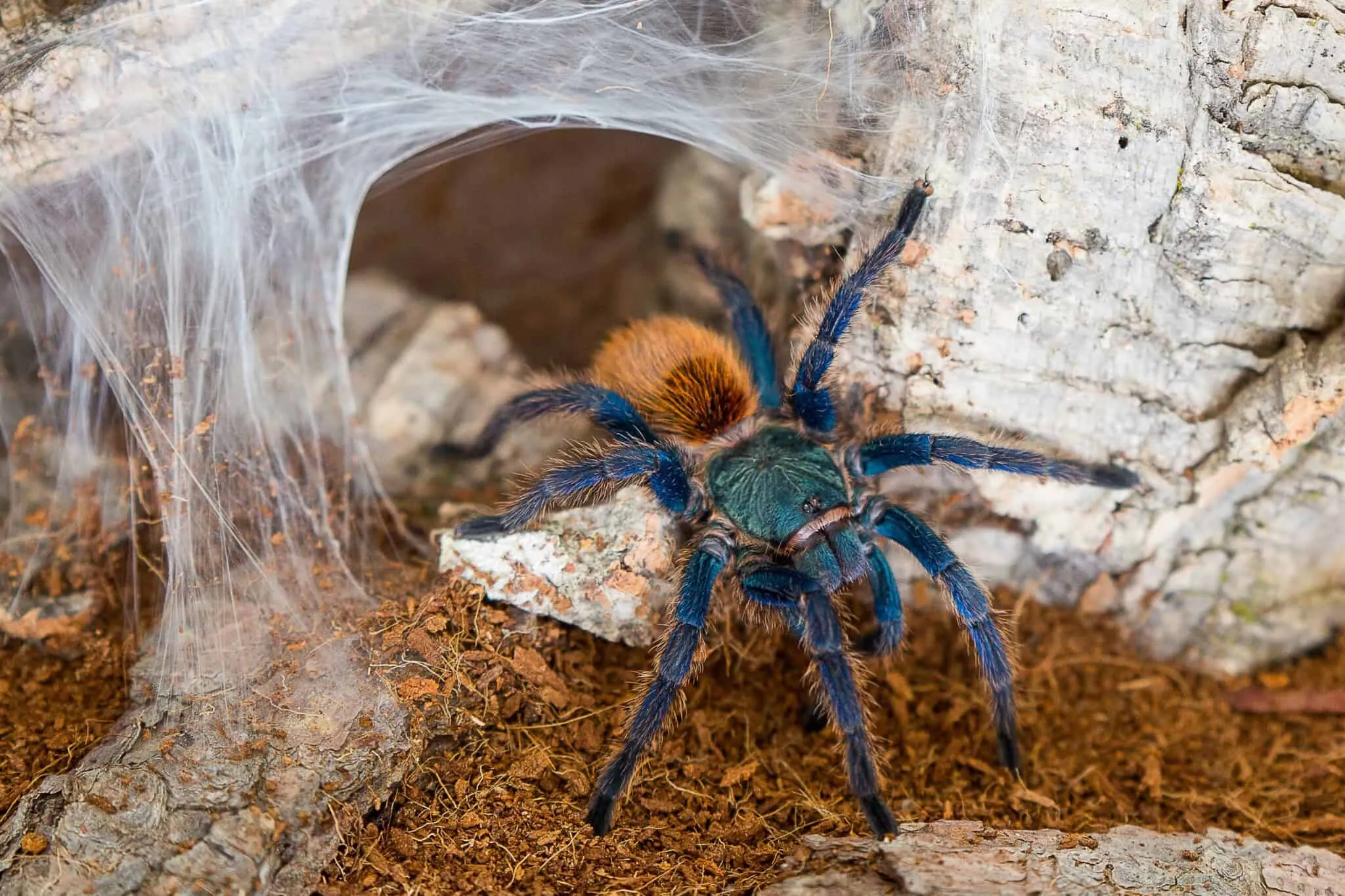
The Cobalt Blue Tarantula (Cyaneopubescens) is another popular and stunning blue tarantula breed, known for its intense coloration and striking appearance. This species is native to the tropical regions of Southeast Asia and is highly prized in the pet trade for its captivating looks. However, it is essential to note that the Cobalt Blue Tarantula can have a defensive temperament and a potent bite, so experienced keepers are better suited to care for this species. Despite the challenges, the Cobalt Blue remains a favorite among enthusiasts due to its beautiful appearance and the thrill of keeping this unique species. The vibrant blues make it a standout in any collection.
Appearance of Cobalt Blue Tarantulas
The Cobalt Blue Tarantula lives up to its name with its striking coloration. The body of the tarantula, including the legs and carapace, is typically a deep, vibrant blue. The intensity of the color may vary depending on the individual tarantula and its stage of development, but the overall effect is a stunning display of blue hues. The abdomen may also feature a darker tone, creating a beautiful contrast. Cobalt Blue tarantulas typically have a medium size, with a leg span that can reach up to 6 inches. The juveniles often exhibit a metallic sheen, making them even more visually appealing. The rich and intense blue color is a primary reason for this species’ popularity.
Habitat and Care for Cobalt Blue Tarantulas
Caring for a Cobalt Blue Tarantula requires careful attention to its environmental needs. The enclosure should be well-ventilated and have a substrate that can retain moisture, such as a mix of coconut fiber, peat moss, and vermiculite. A water dish should always be available, and the humidity levels should be maintained at around 70-80%. The temperature should be kept between 75-85°F (24-29°C). Cobalt Blue Tarantulas are burrowers, so providing a deep substrate is beneficial. They should be fed a diet of insects, such as crickets or roaches, a few times a week. Handling should be kept to a minimum due to their defensive nature and potent bite. A secure and enriching environment helps to keep your tarantula healthy and content. Be sure to take the right safety precautions before caring for a Cobalt Blue Tarantula.
The Greenbottle Blue Tarantula (Chromatopelma cyaneopubescens)
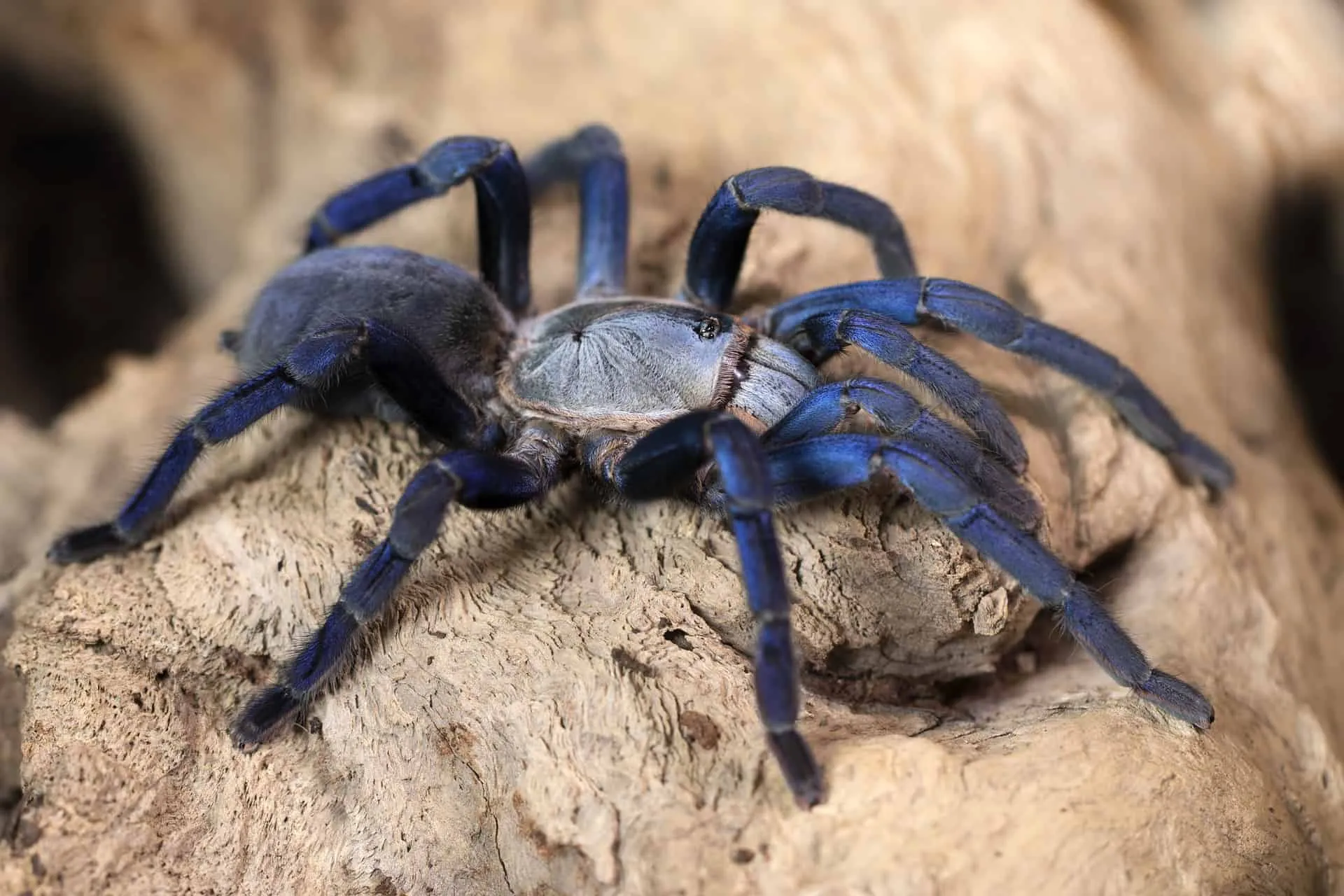
The Greenbottle Blue Tarantula (Chromatopelma cyaneopubescens) is a striking species that is known for its unusual appearance, with vibrant blue legs and a golden-orange carapace. Native to Venezuela, this tarantula has become a favorite among hobbyists due to its striking colors and relatively docile temperament. While not strictly blue, the vibrant blue legs are a standout feature. These tarantulas can make a great addition to the collection of an experienced keeper, but new keepers should be wary of their high maintenance. Their beauty, mixed with their interesting personality, makes them a popular species.
Appearance of Greenbottle Blue Tarantulas
The Greenbottle Blue Tarantula is a vibrant and visually stunning species. The legs are a brilliant blue color, contrasting beautifully with the golden-orange carapace. The abdomen is typically a dark color with orange hairs. These tarantulas can grow to a considerable size, with a leg span that can reach up to 6 inches. Juveniles exhibit vibrant colors from an early stage. The combination of colors and the overall size makes this tarantula an attractive addition to any collection. Healthy Greenbottle Blue Tarantulas exhibit a glossy appearance, adding to their appeal. Their unique coloration is a significant reason for their popularity.
Habitat and Care for Greenbottle Blue Tarantulas
Caring for a Greenbottle Blue Tarantula involves providing an appropriate environment. The enclosure should be well-ventilated, as this species prefers a drier environment, although a small water dish is still necessary. The substrate should be a mix of sand and coconut fiber, and the humidity levels should be kept at around 50-60%. The temperature should be maintained between 75-85°F (24-29°C). Greenbottle Blues are known for webbing extensively, so providing appropriate decor, such as cork bark, can help them create a secure environment. They should be fed a diet of insects, such as crickets or roaches, a few times a week. Handling should be kept to a minimum, although this species is generally less defensive than other blue tarantulas. Regular monitoring of the enclosure and the tarantula’s behavior is essential for its well-being.
Tips for Identifying Blue Tarantula Breeds
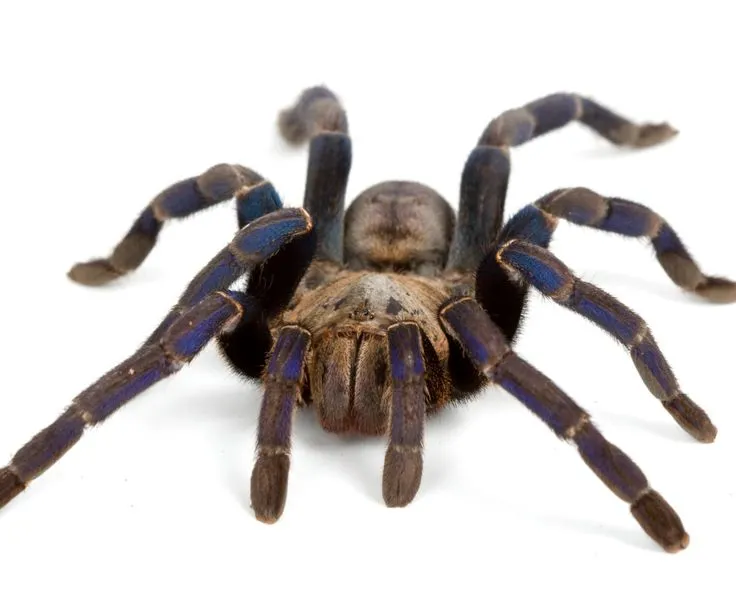
Accurately identifying blue tarantula breeds requires a keen eye and attention to detail. Besides the specific breeds mentioned, several other tarantulas exhibit blue coloration or variations. Start by consulting reliable sources, such as field guides, online databases, and experienced tarantula keepers. Observe the tarantula’s overall appearance, noting the intensity and distribution of the blue color, the size, and the body shape. Consider the tarantula’s temperament, as some breeds are more defensive than others. Look for any distinctive markings or patterns that can help to differentiate the species. Cross-reference the observed features with known breed characteristics to arrive at an accurate identification. It is essential to be patient and thorough in your observations. The more you learn about different breeds, the better equipped you will be at identifying them accurately. Use the tips mentioned to increase your chances of properly identifying your blue tarantula breed.
Color Variations
Color variations can be a key factor in identifying blue tarantula breeds. Note the specific shade and distribution of the blue color. Some tarantulas have a solid blue coloration, while others have blue markings or highlights. The Gooty Sapphire, for example, has blue on its legs, while the Cobalt Blue has blue throughout its body. Observe whether the blue is vibrant or muted, metallic or matte. The presence of other colors, such as red, orange, or yellow, can also provide clues. Furthermore, the intensity of the blue color may vary depending on the age, health, and environmental conditions of the tarantula. Careful observation and comparison with reference images can help you accurately identify different breeds. Look for specific patterns and colors, to help improve the accuracy of your identification. Color is a great tool to use when identifying.
Size and Body Shape
The size and body shape of a tarantula are also valuable indicators for identification. Measure the leg span of the tarantula and compare it with the average size range for different breeds. Note the overall build of the tarantula: is it slender or stocky, compact or elongated? Consider the proportions of the different body parts, such as the legs, carapace, and abdomen. The shape of the carapace can also vary among species. Some breeds have a more rounded carapace, while others have a flatter, more elongated one. These physical characteristics, combined with color patterns, can help narrow down the possibilities. Keep in mind that size and shape can be affected by factors such as age, nutrition, and genetics. It is essential to consider all factors for accurate identification. Comparing size and body shape can offer clues for correct identification.
Behavioral Traits
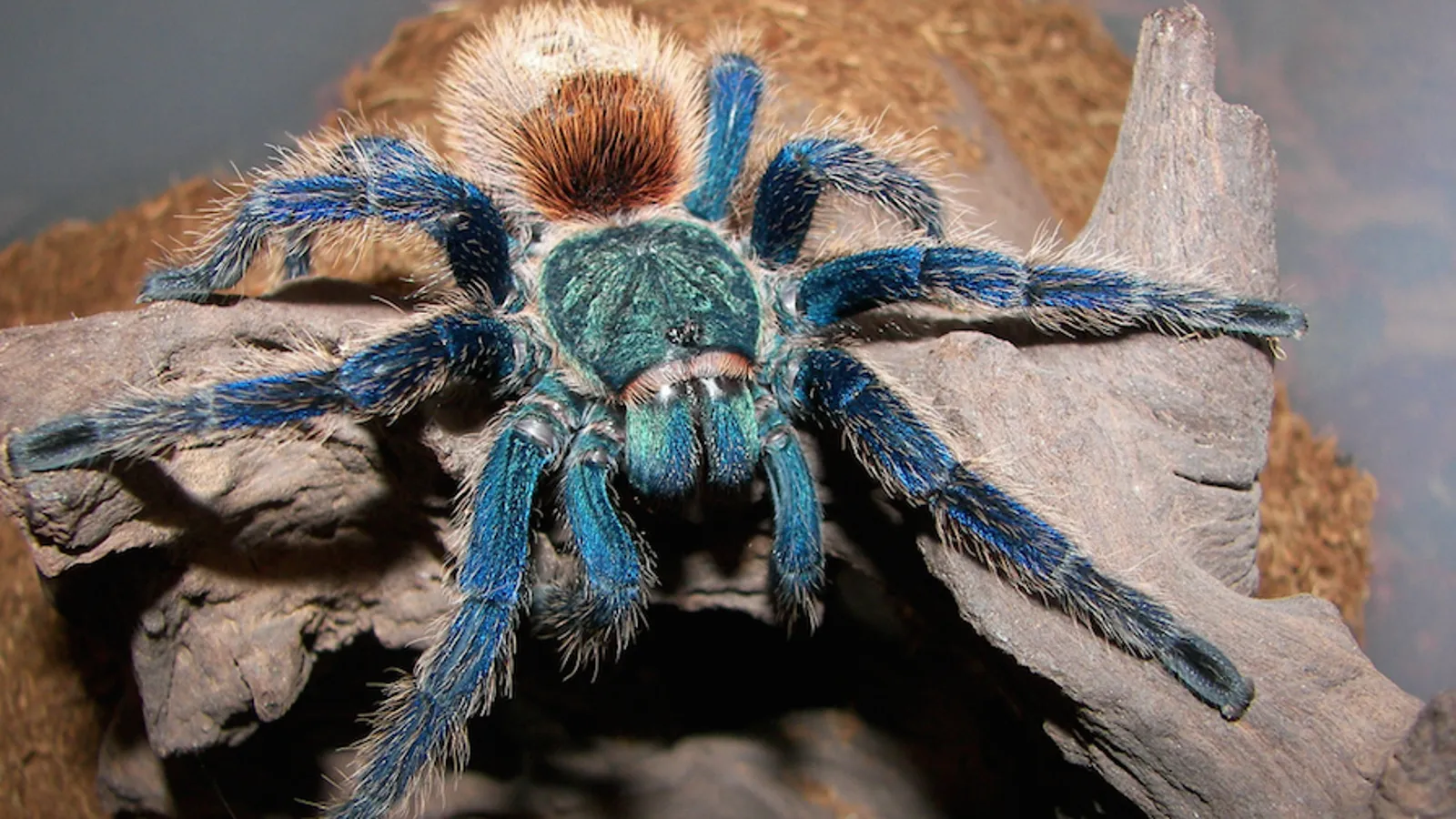
Behavioral traits offer significant clues in tarantula identification. Observe the tarantula’s temperament and its reaction to disturbances. Some breeds are more docile and less likely to bite or kick hairs, while others are more defensive and will readily display threat postures or flee. Pay attention to its web-spinning behavior, as some species are prolific webbers, while others are less inclined to create extensive webs. Consider its burrowing habits; some tarantulas are terrestrial and burrow, while others are arboreal and prefer to climb. How it interacts with its surroundings, such as its feeding habits and activity levels, can provide insight. By studying the tarantula’s behavior in its natural habitat, you can learn more about its identity. Behavioral observations, when combined with physical characteristics and habitat information, can significantly enhance the accuracy of your identification. Understanding behavior is a helpful tool when working with any tarantula breed.
Where to Find Blue Tarantula Breeds
Finding blue tarantula breeds can be exciting, but you should do your research and choose a reputable source. Reputable breeders specializing in exotic pets are an excellent place to start. They can provide accurate information about the species and offer healthy specimens. Local reptile shows and expos often feature vendors selling tarantulas, providing an opportunity to see different breeds in person. Before purchasing, check the tarantula’s health and behavior, and ask questions about its origin and care requirements. Online marketplaces and forums can offer a wide selection, but it is essential to verify the seller’s reputation and read reviews from other buyers. Never collect tarantulas from the wild, as this is harmful to the environment and can lead to legal issues. With due diligence, finding a beautiful blue tarantula breed can be a fun experience. Always ensure you are purchasing from ethical sources.
In conclusion, the world of blue tarantula breeds is as diverse as it is captivating. Accurate identification requires a combination of careful observation, knowledge of breed characteristics, and a commitment to responsible pet ownership. By understanding the different breeds, their appearances, behaviors, and care requirements, you can appreciate these exotic creatures. Whether you are a seasoned enthusiast or a newcomer to the world of arachnids, the journey of learning about blue tarantulas is a rewarding experience. Embrace the beauty and wonder of these unique animals, and always prioritize their health, well-being, and conservation.
